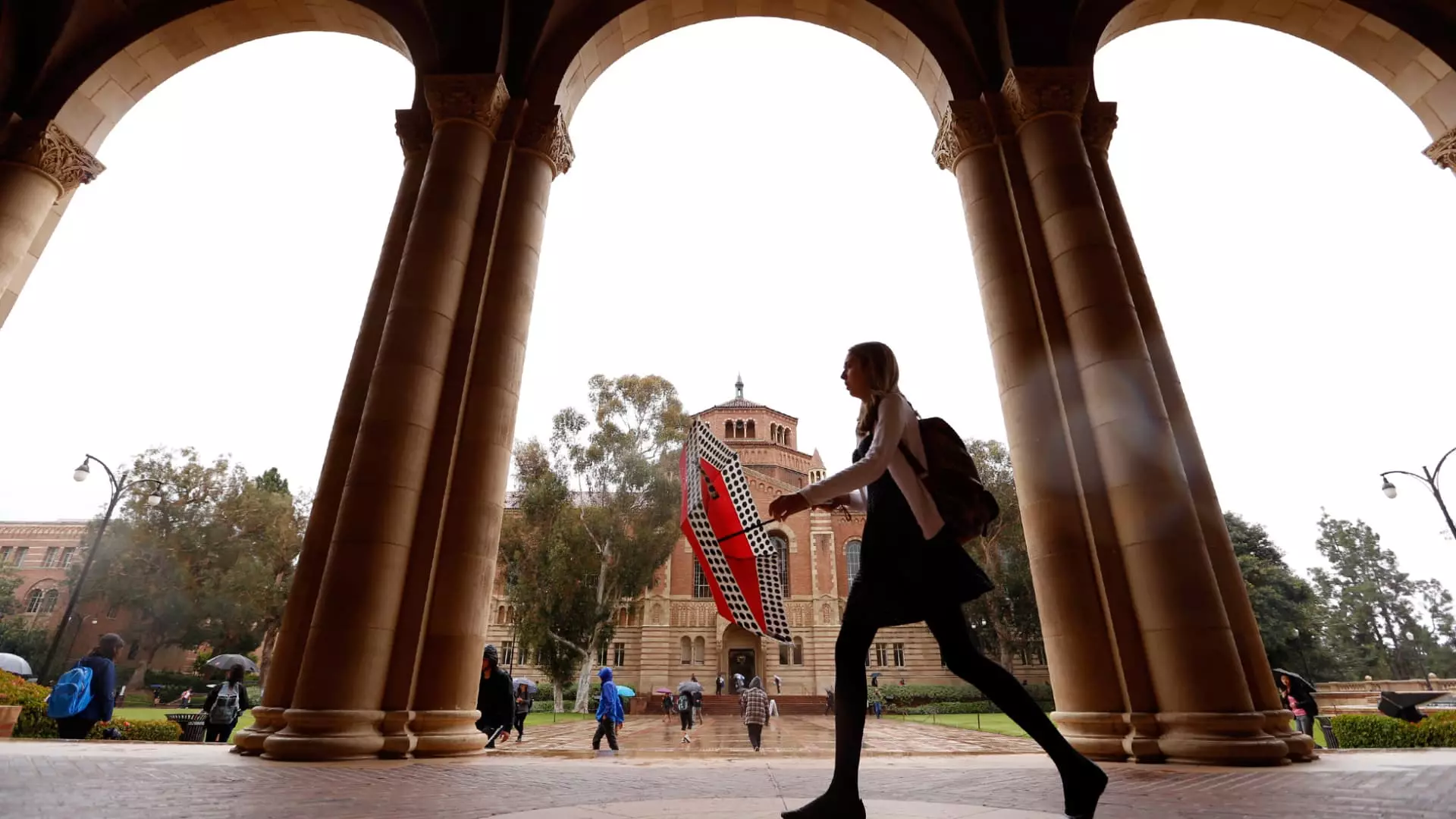In recent years, the landscape of higher education has undergone dramatic changes, marked by a paradox that defies traditional expectations. Despite an increase in the number of students eligible for federal financial aid, particularly the Pell Grant, there is a notable decline in high school graduates pursuing four-year degrees. According to a report by the National Student Clearinghouse Research Center, first-year college enrollment has dropped by 5% overall, with four-year institutions bearing the brunt of this downturn. This article seeks to explore the underlying factors contributing to this trend, examine the implications for students and educational institutions, and discuss the increasing allure of alternative pathways.
The reality is sobering: while more students qualify for financial support, the costs associated with attending four-year colleges continue to escalate. For many, the dream of obtaining a degree is increasingly marred by financial burdens that are becoming harder to bear. This is particularly evident among four-year colleges that cater primarily to low-income students, where first-year enrollment has plummeted by over 10%. A simple analysis reveals that as the price of a four-year education skyrockets—averaging nearly $58,600 per year for private institutions—many aspiring students are forced to reconsider their plans.
Mark Kantrowitz, a higher education expert, emphasizes the challenges presented by the recent simplification of the Free Application for Federal Student Aid (FAFSA). Initially intended to make financial aid more accessible, the reformed application process has spurred confusion among many students, leading to a decline in applications and ultimately exacerbating enrollment issues. This complexity, coupled with economic realities, has left many prospective students feeling overwhelmed.
Despite a reported 10% increase in the number of students expected to receive Pell Grants this academic year—thanks in part to broader eligibility criteria—the overall number of grant recipients has plummeted. The latest statistics from the College Board illustrate a stark decline: Pell Grant awards peaked at 9.4 million during the 2011-12 academic year, dropping to just 6.4 million in the most recent cycle. This decline indicates that while the government aims to support low- to middle-income families, the financial resources available still fall short of keeping pace with rising educational expenses.
Compounding this issue is the fact that the maximum Pell Grant award—set at $7,395—has not kept stride with tuition increases. This disparity underscores a growing concern among students and families about whether the investment in a four-year education is worthwhile. A sentiment echoed by many is that the return on investment concerning a college degree is now under scrutiny.
As traditional college enrollment declines, an interesting shift has occurred: a surge in students opting for alternative pathways to education. Short-term accreditation programs and community colleges are gaining traction, with enrollment in certificate programs increasing by 7.3%. The pursuit of practical and immediate training in lieu of a lengthy four-year program resonates with students who are keen on acquiring employable skills without the burdensome debt typically associated with traditional college degrees.
Jamie Beaton, co-founder of Crimson Education, suggests that skepticism about the value of a conventional degree is driving this trend. Young people increasingly ask whether the financial cost and time investment are justified in the current job market. The rise of digital platforms and online learning has also facilitated access to quality education outside the realm of traditional institutions, allowing students to tailor their educational experiences to meet their needs and career aspirations.
The current trajectory of college enrollment raises essential questions about the future of higher education in the United States. Schools and policymakers must address the widening gap between educational costs and available financial aid, all while contending with shifting perceptions regarding the value of a college degree. As we witness an increasing number of students gravitate toward alternative pathways, it remains critical for educational institutions to adapt, ensuring that they not only provide accessible options but also relevant and valuable educational experiences.
The transition toward a more multifaceted educational landscape undoubtedly challenges traditional norms but also offers an opportunity for innovation. Whether through shorter, skill-focused programs or revamped financial aid structures, the future of education will likely be defined by diversity in learning paths that meet the ever-evolving needs of our society.

